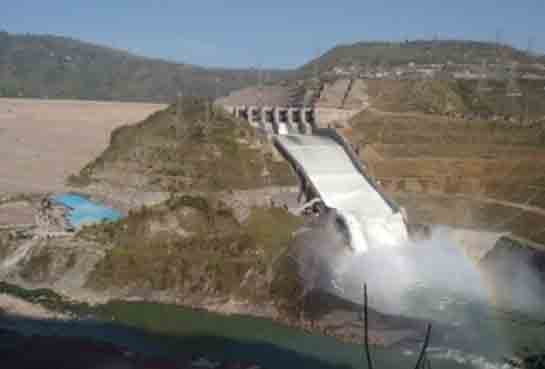Ministry has issued notification on February 17 to this effect. NCDS has come into force from February 18 across the country. The committee is headed by Chairperson, Central Water Commission (CWC), while Chairperson, National Dam Safety Authority (NDSA) will be a member of this 14-member NCDS.
NCDS has come in its avatar at a time when the "water safety, water security and water quality" have assumed huge significance in the country and all over the world. The water exigencies have been triggered by the depleting water towers, water resources, depleting glaciers and receding rivers and the depleting underground water table and pollution of water bodies across the country, comment experts.
Other members of the committee are the Member, Design and Research, CWC, the Central Electricity Authority, Ministry of Power, representative of Water Resources River Development and Ganga Rejuvenation, Ministry of JAL shakti, representative of National Disaster Management Authority, Ministry of Home Affairs, representative of Ministry of Environment Forest and Climate Change. Other members include, Director General India Meteorological Department(IMD), Ministry of Earth Sciences, Director General, Geological survey of India, Director National Geophysical Research Institute, Director National Remote Sensing Center ISRO, Direct general Geo-physical Resource Institute.
NCDS has seven representatives of the State Government, Engineering- in-Chiefs equivalent by rotation, three specialists in the field of dam safety and allied fields. The Member (Policy and Research), NDSA is the Member- Secretary of NCDS.
According to the sources, NCDS will take care of all aspects of safety and security and other issues of dams under CWC. The committee has brought all the major dams under one umbrella committee in view of the security concerns raised by the threat perception from terrorist organizations or insurgents that may target dams that, in turn, can pose danger to downstream communities, power houses and irrigation systems across the country.
From Baglihar, Dulhasti, Kisanganga dams in Jammu and Kashmir to Bhakhra, Pong Dam, Kol Dam, Chamera in Himachal and Tehri, Dhauliganga, Baigul in Uttarkhand, there are over 50 small and big dams on the Himalayan rivers. These dams are backbone of power generation, but they also supply water for irrigation and drinking for the lakhs of population living downstream along the river basins.
There are over dozen of antique dams and irrigation projects of the like Mulla Periyar Dam, which have earned the prestigious heritage status because of their unique design and antiquity in the country. There are others which have become major sources of fisheries, nesting sites for migratory birds and wild animals, major tourist attraction and water sports that give livelihoods for lakhs of people across the country. 
Many state governments and state Power Board have set up the dam safety cells in the state Energy department or boards, but now on the government will have the dedicated body under the NCDS, said the officials.
NCDS will now monitor the control, conservation and utilization of water resources throughout the country which comes under the CWC. CWC oversees control, conservation and utilization of water resources, for purpose of Flood Control, Irrigation, Navigation, Drinking Water Supply and Water Power Development. CWC also undertakes the investigations, construction and execution of any such schemes as required.
(Kuldeep Chauhan is Editor, HimbuMail)







